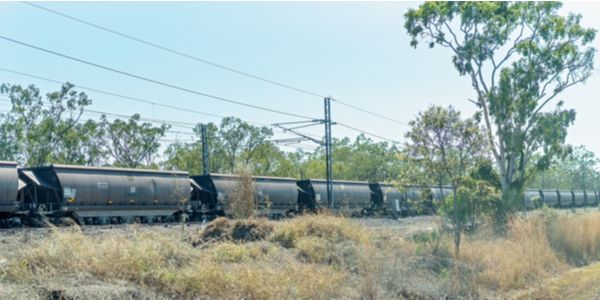02 June, 2020 | Transport
The Queensland Treasurer has released his decision on the Queensland Government’s declaration reviews for transport infrastructure services provided by DBCT Management (DBCTM), Aurizon Network and Queensland Rail (QR), with the decision made to continue declaration for all three services. The most contentious of these decisions will be the continued declaration of DCBT.

The QCA Act outlines four access criteria, each of which must be satisfied to declare a service. These criteria relate to whether:
Although a number of issues were raised across the four criteria, the key issues relate to the competition test and the natural monopoly test, which require a more rigorous economic analysis.
The decision in respect of Aurizon Network is relatively straightforward. In particular, as there are no substitutes to the central Queensland coal network (CQCN), the natural monopoly test is satisfied. Further, as a vertically integrated entity Aurizon Network would have the ability and incentive to favour its related entity and frustrate competition in the above-rail haulage market, and so would pass the competition test.
However, the decision in respect of the services provided by Queensland Rail and DBCT Management are more nuanced. Unlike Aurizon Network, these two entities are not vertically integrated. The key criterion is the competition test and the fundamental issue relates to the interpretation of ‘material increase in competition’. As we note below in respect of the DBCT service, the Minister and the QCA seem to have formed a different opinion on this.
Unlike Aurizon Network and QR, DBCT is the not the sole infrastructure facility (ie coal export terminal) in Queensland. There are four other terminals: Hay Point coal terminal (HPCT), Adani Abbot Point Terminal (AAPT), RG Tanna, and Wiggins Island coal export terminal (WICET).
The Minister accepted the QCA’s recommendation that the relevant market is the market for DBCT’s coal handling service in the Goonyella system and in that market there are no close substitutes for the DBCT service. In so doing, the Minister accepted in particular that:
The Minister agreed with the QCA that in circumstances where there are no close substitutes for the relevant service, the relevant comparison for the “least cost” analysis is the cost of meeting total foreseeable demand by expanding the existing DBCT facility compared to the cost of duplicating (or partially duplicating) DBCT. In this context, the Minister accepted the QCA’s recommendation that an expanded DBCT is able to meet total foreseeable demand in the market at least cost compared to the existing DBCT facility and a duplicated (or partially duplicated) facility.
The Minister did not accept DBCT Management’s submission that the relevant comparison for the “least cost” comparison can be made by reference to the option of using facilities that are not close substitutes to DBCT—that is, facilities outside the market. However, for completeness, the Minister referred to, and accepted, the QCA’s conclusions that the cost of meeting foreseeable demand using an expanded DBCT is likely to be lower than the cost of meeting such demand by using the existing DBCT and any of AAPT, RG Tanna and WICET.
This test requires assessing if there is at least one dependent market in which competition would be materially affected due to DBCT Management’s exercise of market power.
In summary, the Minister:
The following section summarises the key issues in respect of analysing the environment for competition and its application in the market for development stage coal tenements.


The Minister accepted the QCA’s approach that the assessment of criterion (a) requires comparing the competition environment in a future with declaration with that in a future without declaration. In that respect, the Minister accepted that the terms and conditions of access that exist now (and the state of competition in related markets) reflect the current outcome of declaration.
For DBCT, the key competition issue relates to different terms applying to existing DBCT users and new DBCT users.
The Minister accepted that existing DBCT users would continue to get the benefit of the constraints in their existing user agreements up to the volumes in those agreements which are evergreen and would allow them to pay an access charge similar to what the QCA would have set.
On the contrary, new users (including expanding existing users) would be subject to whatever access arrangements exist in the absence of declaration. In this context, the Minister accepted that the access framework/deed poll executed by DBCT Management are a part of the counterfactual and inform the access terms that would apply in a future without declaration.
The Minister accepted that DBCT Management, despite not being vertically integrated, would have the ability and incentive to exert market power in the absence of declaration. The key issue was whether the deed poll/access framework sufficiently constrained DBCT Management.
DBCT Management had proposed the deed poll for a period of 10 years i.e. up to 2030. So the competition assessment encompassed the period before 2030 and that after 2030 ie over the economic life of a mine that would last longer than 10 years.
The Minister determined that the Deed Poll and Access Framework provide ‘some constraint’ on DBCTM’s ability and incentive to exert market power in the absence of declaration. However, unlike the QCA, the Minister determined that those constraints are not strong enough to sufficiently constrain DBCTM’s ability and incentive to exercise market power. In particular, the Minister considered that the access environment under the deed poll/access framework would be less favourable for New Users than access under declaration
In respect of pricing, the threshold issue was the competitive significance of DBCT Management’s commitment to self-impose a price cap for DBCT’s service in the absence of declaration ie charge new users up to $3/tonne more than the price under a QCA-administered pricing regime (which is also the charge existing users would pay).
The Minister accepted that in a future without declaration, New Users will potentially pay up to $3 per tonne more for access at DBCT compared to the price payable by Existing Users. The Minister’s view is that:
the pricing approach allows for at least some degree of monopoly pricing. The price under a QCA-administered regime represents the best estimate of the price that would apply in a workably competitive market. By providing for a maximum possible price $3 per tonne above this price, the Access Framework allows for a price above the (best estimate of) the workably competitive market price. Only firms exercising market power can sustainably charge above the workably competitive market price.
The competition impact then relates to the extent to which existing users are advantaged in terms of accessing DBCT capacity, compared to new users, due to price and non-price asymmetry between them. So, the focus is on the ability of new users to enter the dependent market i.e. to acquire development stage tenements.
The Minister noted the QCA’s view that:
The Minister was not convinced by the focus of QCA’s analysis on profit margins stating that while New Users’ assessment of the profitability (or viability) of potential projects is relevant, the more pertinent question is whether the pricing differential is likely to cause New Users to assess a tenement as having a value materially below that assessed by Existing Users.
The Minister’s view is that the pricing differential may act as a barrier to entry for New Users, even in circumstances where New Users assess a tenement as being profitable. This is because the higher valuation arrived at by Existing Users will tend to result in Existing Users offering higher prices for tenements, thus effectively outbidding the potential new entrants.
The Minister acknowledged that the DBCT User group’s analysis and the QCA analysis indicated that the impact is material and, accordingly, would be likely to result in a material barrier to entry. However, the Minister did not form a conclusive view on whether the pricing differential would produce that result as the Minister:
Rather the Minister focused on the pricing arrangement beyond 2030. The Minister accepted that a decision by mine owners seeking to invest in new mines will involve substantial sunk investment as well as that the presence of sunk investments, given the length of a mine’s life and the uncertainty about the pricing regime to apply after 2030, create the potential for hold-up of new investments.
The Minister’s view is that a New User considering entering a user agreement under the Access Framework in the period 2020–2030 would face considerable uncertainty as the pricing regime to which it will be subject after 2030. This uncertainty for New Users is likely to give rise to concerns on the part of those New Users about the risk of hold-up, which is sufficient to discourage New Users from entering the development stage tenements market.
On the contrary, declaration will substantially reduce the risk of hold-up. This is because access agreements entered into under the declaration are likely to be evergreen agreements. As such, New Users entering the development stage tenements market in the period 2020–2030 will know they will get the protection of an evergreen user agreement that will continue to apply after 2030.
As a result, by reducing the risk of hold-up, access (or increased access) as a result of declaration of the DBCT service would promote a material increase in competition in the development stage tenements market.
In so doing, the Minister did not accept the QCA’s conclusions that DBCT Management’s conduct in constraining itself for a period of 10 years demonstrated that the threat of declaration would constrain DBCT Management beyond 2030.

02 June, 2020 | Transport